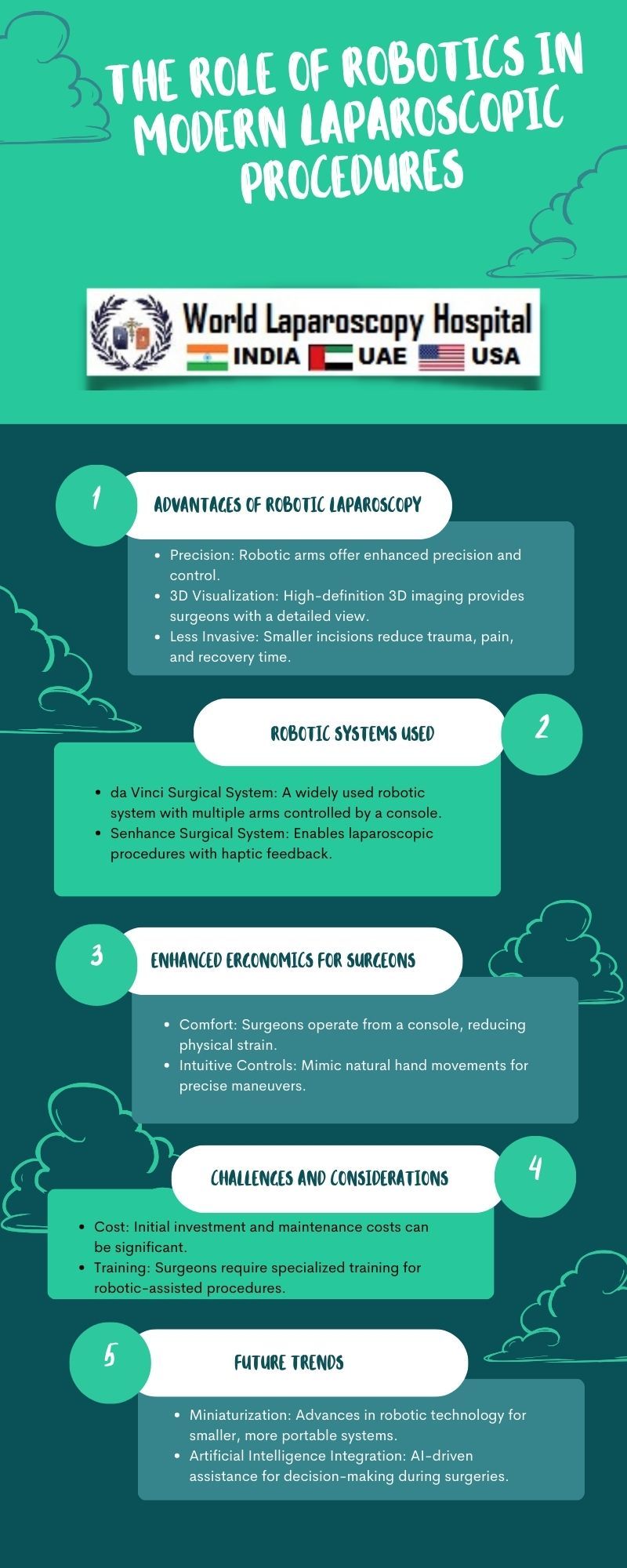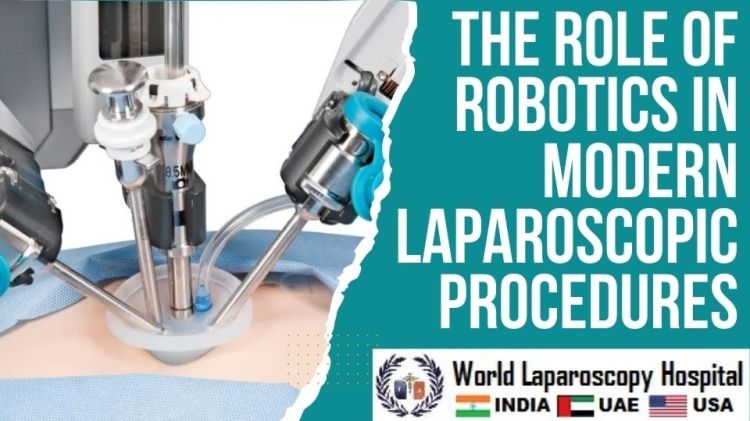The Role of Robotics in Modern Laparoscopic Procedures
Introduction
In the ever-evolving landscape of medical technology, robotics has emerged as a transformative force, particularly in the field of surgery. Among the various surgical disciplines, laparoscopic procedures have witnessed a paradigm shift with the integration of robotics. This article delves into the multifaceted role that robotics plays in modern laparoscopic surgeries, exploring its impact on precision, efficiency, patient outcomes, and the overall landscape of surgical interventions.

Evolution of Laparoscopic Surgery
Laparoscopic surgery, also known as minimally invasive surgery, marked a significant departure from traditional open surgeries. The introduction of laparoscopy revolutionized the surgical landscape by minimizing incisions, reducing patient trauma, and accelerating recovery times. However, the technique posed challenges related to limited dexterity and restricted visualization for surgeons.
The Rise of Robotic-Assisted Laparoscopy
The advent of robotic technology addressed the limitations of traditional laparoscopy, ushering in a new era of surgical precision. Robotic-assisted laparoscopy involves the use of robotic systems to enhance a surgeon's capabilities during minimally invasive procedures. The da Vinci Surgical System, a pioneering robotic platform, exemplifies this integration, comprising a console for the surgeon, robotic arms with surgical instruments, and a vision system.
Precision and Dexterity Amplification
One of the primary advantages of robotic-assisted laparoscopy lies in its ability to amplify the precision and dexterity of surgeons. The robotic arms mimic the hand movements of the surgeon with greater articulation, enabling intricate maneuvers in confined spaces. This enhanced precision is particularly crucial in delicate procedures such as organ resections, suturing, and vascular anastomosis.
Improved Visualization
Visualization is paramount in any surgical procedure, and robotic systems significantly enhance this aspect of laparoscopy. High-definition, three-dimensional imaging provided by robotic platforms allows surgeons to navigate intricate anatomical structures with unparalleled clarity. This improved visualization reduces the risk of errors and complications, contributing to overall surgical success.
Enhanced Ergonomics and Surgeon Comfort
Traditional laparoscopy can be physically demanding for surgeons due to prolonged periods of maintaining awkward positions and manipulating rigid instruments. Robotic systems address this challenge by offering improved ergonomics and surgeon comfort. The console allows surgeons to sit comfortably while controlling the robotic arms, reducing fatigue and enhancing overall procedural efficiency.
Telemanipulation and Remote Surgery
Advancements in robotic technology have paved the way for telemanipulation, enabling surgeons to perform procedures remotely. This capability is especially valuable in scenarios where specialized expertise is required but not readily available on-site. Remote surgery holds the potential to democratize access to high-quality surgical care, bridging geographical gaps and improving healthcare accessibility.
Shortened Learning Curve
The integration of robotics in laparoscopic procedures has been accompanied by a shortened learning curve for surgeons. While mastering traditional laparoscopy can be time-consuming, robotic-assisted systems offer intuitive controls and a more familiar interface. This accelerates the training process, allowing surgeons to quickly adapt and harness the full potential of robotic technology in the operating room.
Patient Benefits and Outcomes
The ultimate goal of any surgical intervention is to enhance patient outcomes, and robotic-assisted laparoscopy has demonstrated significant benefits in this regard. Smaller incisions result in reduced postoperative pain, shorter hospital stays, and faster recovery times. The precision afforded by robotics also contributes to decreased blood loss, lower complication rates, and improved overall safety for patients.
Complex Surgical Procedures Made Feasible
Certain surgical procedures that were once deemed too complex or risky with traditional laparoscopy have become feasible and safer with the assistance of robotics. Examples include complex oncological surgeries, intricate gastrointestinal reconstructions, and urological procedures requiring precise manipulation in tight spaces. The adaptability of robotic systems expands the scope of minimally invasive surgery across various specialties.
Economic Considerations and Cost-effectiveness
While the initial investment in robotic systems can be substantial, the long-term cost-effectiveness of robotic-assisted laparoscopy is gaining recognition. Reduced hospital stays, faster recovery times, and decreased postoperative complications contribute to overall healthcare cost savings. Additionally, the potential for outpatient robotic procedures further supports the economic viability of this technology.
Ethical and Societal Implications
The integration of robotics in surgery raises ethical considerations, particularly regarding job displacement and the potential dehumanization of healthcare. Striking a balance between technological advancement and maintaining the human touch in medicine is crucial. Ethical guidelines and ongoing discussions within the medical community are essential to navigate the evolving landscape of robotic-assisted laparoscopy.
Conclusion
In conclusion, the role of robotics in modern laparoscopic procedures is multifaceted and transformative. From enhancing precision and dexterity to improving visualization and patient outcomes, robotic-assisted laparoscopy has redefined the possibilities of minimally invasive surgery. As technology continues to advance, the integration of robotics in the operating room will likely become more commonplace, reshaping the future of surgical interventions and contributing to a new era of healthcare excellence.
